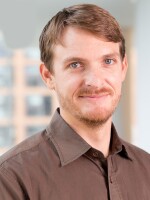DAVID GREENE, HOST:
Here in California, fire officials say they are close to fully containing all of those fires still burning in the northern part of the state. More than 8-and-a-half million acres have burned. Let's put that in perspective. It's destroyed an area bigger than Maryland and Connecticut combined. And with a warming climate, many fear this could be the new normal. Lawmakers and land managers are looking at ways to lessen the threat of wildfires. But the best option might be a hard one to accept, as NPR's Nathan Rott reports.
NATHAN ROTT, BYLINE: Let's just get one thing out of the way right here at the top. Every fire ecologist you're going to hear from in this story says the same thing.
MARK FINNEY: We can't get rid of wildfire. It doesn't matter how hard we fight this. And we've been fighting fire for a century or more. No matter how hard you fight it, you can't get rid of it.
ROTT: That was Mark Finney, a research forester who we'll come back to. OK, so knowing that we can't get rid of wildfire, how do we at least lessen the risk? Well, fire needs three things to burn - fuel, oxygen and heat - or an ignition source. There's not much we can do about oxygen. That's here to stay - thankfully. Ignitions, we've been trying to address for a very long time.
(SOUNDBITE OF ARCHIVED RECORDING)
JACKSON WEAVER: (As Smokey the Bear) Remember, only you can prevent forest fires.
ROTT: But we haven't been very good at it. Humans still cause more than 8 out of 10 wildfires, which leaves us with fuel - the trees, bushes, grasses that allow fires to burn. This is where policymakers are focusing their efforts. In response to this season's fires, Interior Secretary Ryan Zinke is directing land managers to try and prevent forest fires through, quote, "aggressive and scientific fuels-reduction management." Some western lawmakers have taken that to mean more thinning or logging on federal lands. Many environmental groups, interpreting the same, have cried foul, saying Zinke is placating his base in rural areas and favoring industry. But fire ecologists say the real solution is more complicated, as we find out in the Lolo National Forest in western Montana.
So you were saying 30 years ago, this whole forest used to be a lot denser?
KEVIN RYAN: It was denser, and you'd see a lot of the - you still see some of the dwarf mistletoe brooms on the branches of the Douglas fir out there.
ROTT: That's Kevin Ryan. He's worked in wildfire for decades. With him is Tim Love, a former district ranger with the Forest Service. This piece of forest that we're in has been thinned.
RYAN: If we walk in there, we can see the stumps. And imagine each one of those is a tree with a crown in it.
ROTT: There are plenty of stumps and plenty of big, healthy trees too - ponderosa pines and Douglas firs. The forest floor is a blend of shin-high gold, green and rust-red grasses and shrubs. Younger pines poke out in the open areas like little Charlie Brown Christmas trees just waiting to grow.
RYAN: So right now, this stand is in pretty good shape. Most fires that would be in here - it's going to stay on the ground. And the vast majority of the trees are going to survive.
ROTT: A fire that stays on the ground is not only less destructive, but it's easier to control. Ryan and Love say thinning can help accomplish that goal. But what's really needed is fire.
FINNEY: To solve the wildfire problem, we actually need more fire.
ROTT: This is Mark Finney, that fire forester from earlier. He works at the Fire Science Laboratory in Missoula, Mont., and has a bumper sticker over his desk that reads - good fires prevent bad ones - good ones being the small ground fires that burn vegetation, clearing out fuels. The problem is, Finney says, us humans tend to see all wildfires as bad.
FINNEY: Essentially, what our attempts at fire suppression do is stop all the mild to moderate fires, leaving only the most extreme ones to burn because we can't do anything else about it.
ROTT: What we need to do, Finney says, is learn to live with fire. Nathan Rott, NPR News. Transcript provided by NPR, Copyright NPR.



